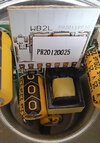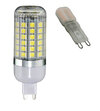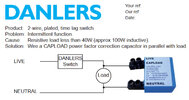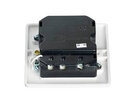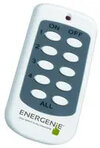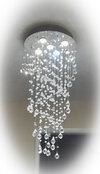- Joined
- 27 Jan 2008
- Messages
- 27,687
- Reaction score
- 3,354
- Location
- Llanfair Caereinion, Nr Welshpool
- Country

A LED needs some method to restrict the current, the problem is when we buy a bulb we have no idea how this is done in that bulb, it could be a pulse width modulated controller, a simple resistor, or a capacitor, with the exception of the resistor, it may need a smooth DC supply, or a 50 Hz supply, and a pulse width modulated chip supplied by a device also using switch mode regulation or pulse width modulated without so form of smoothing could do all sorts of things.
Radio receivers and transmitters use diodes, coils and capacitors plus the odd resistor, and the LED light has the same components so could easy become a radio transmitter, when doing my Radio Amateurs exam we looked at filters and tuned circuits, and we could be unwittingly be forming these with the high current involved.
So we have two options between the lamp and voltage dropping device, 50 Hz and a lamp designed for 50 Hz or smooth DC and a lamp designed for smooth DC, other combinations may work, but we really have not got a clue what we may be making by combining non matched lamps and power supplies.
The same to some extent with low voltage (230 volt AC) we hope the lamps have no DC component and will not affect the operation of out protective devices (RCD's) we know the type A RCD can handle 6 mA of DC, but we have no idea if the devices we are using produce no DC or 100 mA DC, some devices like EV charging units do monitor DC and will auto disconnect if it exceeds 6 mA, but most of the stuff we use has nothing to monitor the DC let alone trip if it exceeds the safe limit, we know with a type A it can handle 6 mA, and we know with type AC it may or may not handle 6 mA, but only safe option is type B which are very expensive.
So we cross out fingers, we really have not a clue what is going on, with the exception of @bernardgreen using an oscilloscope, so all we can do is avoid the switch mode power supply, and the toroidal lighting transformer is a large heavy lump, so in real terms the GU10 is likely the best option, can still use same fittings.
I was under the impression now unless better than 75 lumen per watt, or decoration only as with Christmas tree lights old lamps had to be withdrawn from sale, but today walking around Pound Land both G5.3 MR16 and G9 quartz bulbs were still on sale. Maybe MR16 are seen as for decoration only?
Radio receivers and transmitters use diodes, coils and capacitors plus the odd resistor, and the LED light has the same components so could easy become a radio transmitter, when doing my Radio Amateurs exam we looked at filters and tuned circuits, and we could be unwittingly be forming these with the high current involved.
So we have two options between the lamp and voltage dropping device, 50 Hz and a lamp designed for 50 Hz or smooth DC and a lamp designed for smooth DC, other combinations may work, but we really have not got a clue what we may be making by combining non matched lamps and power supplies.
The same to some extent with low voltage (230 volt AC) we hope the lamps have no DC component and will not affect the operation of out protective devices (RCD's) we know the type A RCD can handle 6 mA of DC, but we have no idea if the devices we are using produce no DC or 100 mA DC, some devices like EV charging units do monitor DC and will auto disconnect if it exceeds 6 mA, but most of the stuff we use has nothing to monitor the DC let alone trip if it exceeds the safe limit, we know with a type A it can handle 6 mA, and we know with type AC it may or may not handle 6 mA, but only safe option is type B which are very expensive.
So we cross out fingers, we really have not a clue what is going on, with the exception of @bernardgreen using an oscilloscope, so all we can do is avoid the switch mode power supply, and the toroidal lighting transformer is a large heavy lump, so in real terms the GU10 is likely the best option, can still use same fittings.
That does not ring true, as no need to change fitting, however running the earth may cause problems.There are suggestions above to change the lamp base fitting to GU10. That would cost a few hundred quid and in some cases be impossible because of hole shape/size.
I was under the impression now unless better than 75 lumen per watt, or decoration only as with Christmas tree lights old lamps had to be withdrawn from sale, but today walking around Pound Land both G5.3 MR16 and G9 quartz bulbs were still on sale. Maybe MR16 are seen as for decoration only?


